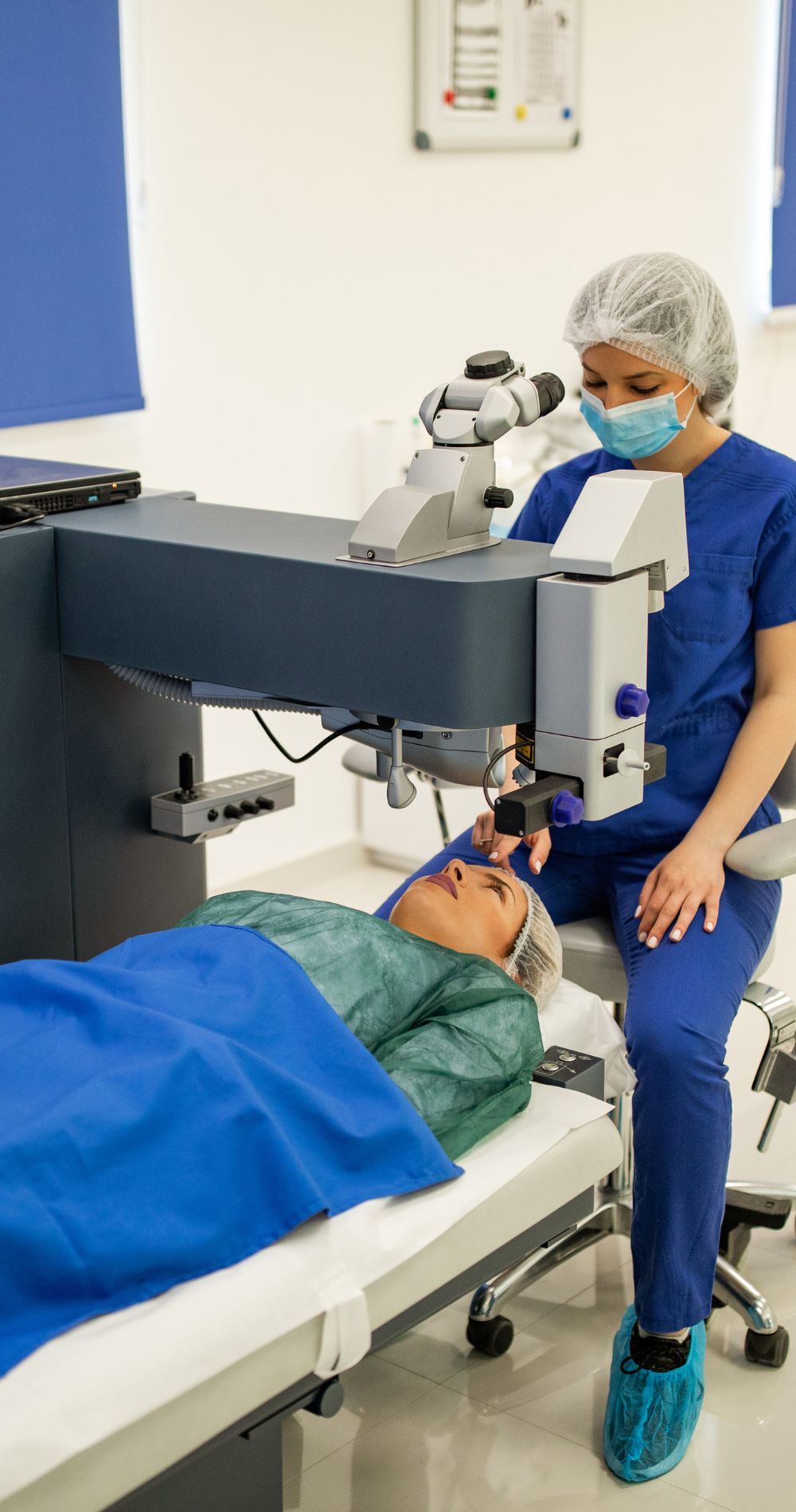August is Senior Eye Health Month
Approximately one in three adults develop a vision-reducing eye disease by the age of 65.
Senior Eye Health Month in August aims to help older adults become aware of how their eye health can change as they age, and what to be aware of. Between ages 41 and 60, it’s not uncommon for adults to notice a change in their ability to see clearly at close distances, such as when driving, reading, or working via computer.
Keep an eye out for these early symptoms
While symptoms are often absent in the early stages of eye diseases, there are still some telltale signs of vision problems that you can look for.
Some notable eye changes to look for include:
- Recurring or sudden eye pain
- Blurred or double vision
- Seeing lights, floating spots, halos, or “spider webs” in vision
sensitivity to light or glare - Observing a “curtain coming down” or “cup filling with ink” in or over one eye
If you or your aging loved one experiences any of these symptoms—or any sudden change in vision at all—it’s essential that you schedule an appointment with an eye doctor immediately.
An annual eye exam, in conjunction with regular physical exams, are both important to help make sure your senior years are as enjoyable as possible. Some health conditions, such as diabetes, can also affect eyesight. Any of these conditions caught early, though, make a full recovery much more likely. So this August, let’s use Senior Eye Health Month as a reminder to make an appointment to get those eyes checked!
Vision-related problems for seniors
One-third of all seniors in the US will most likely develop an eye health issue by the age of 65. The issues range from some vision loss to potential blinding. The most common causes of vision loss among the elderly are age-related macular degeneration, glaucoma, and cataract. The more you monitor these changes, the earlier these issues can be caught and treated.
Age-related macular degeneration (AMD)
Age-related macular degeneration (AMD) is the leading cause of loss of vision in people over 65 years of age. It affects the macula, the area of the retina responsible for central vision. Symptoms include blurred vision, image distortion, central scotoma, and difficulty reading. Risk factors include increasing age, family history of AMD, and cardiovascular risk factors such as hypertension and cigarette smoking
Cataracts
Cataracts are the most common cause of blindness worldwide. The prevalence of the condition grows with age. Less than 5% of people under 65 experience it, then that percentage jumps to 50% in ages 75 and older. Thankfully, in the US, surgery is available that significantly reduces the blinding effect of cataracts. Exposure to ultraviolet light may contribute to the progression of cataract formation.
Glaucoma
Glaucoma is the name for a group of conditions that include glaucomatous optic nerve damage and visual field loss. It contributes to the blindness of many older Americans – an estimated 1 million Americans over 65 years of age have experienced loss of vision associated with glaucoma, and approximately 75 percent of persons who are legally blind because of glaucoma are over the age of 65. Symptoms of glaucoma include visual field loss and blurred vision. Common risk factors include a family history of glaucoma, increasing age, high degree of myopia, hypertension, and diabetes.
Are you experiencing blurry vision as you age?
Feeling like you’re straining to read things right in front of your face is an inconvenient, but normal condition of the eye that is a part of aging. Reporter Jason Howland explains in today’s Mayo Clinic Minute.

